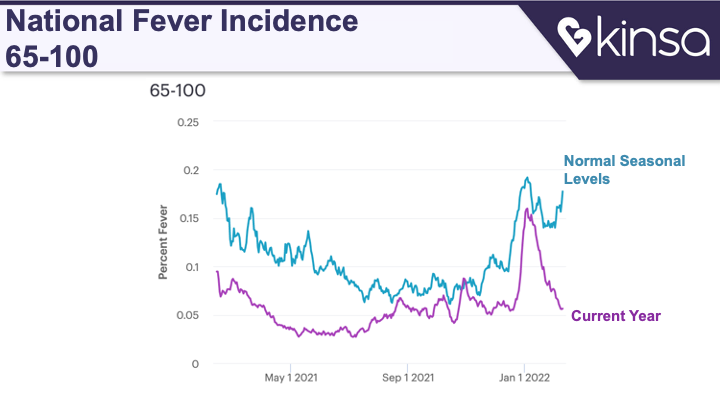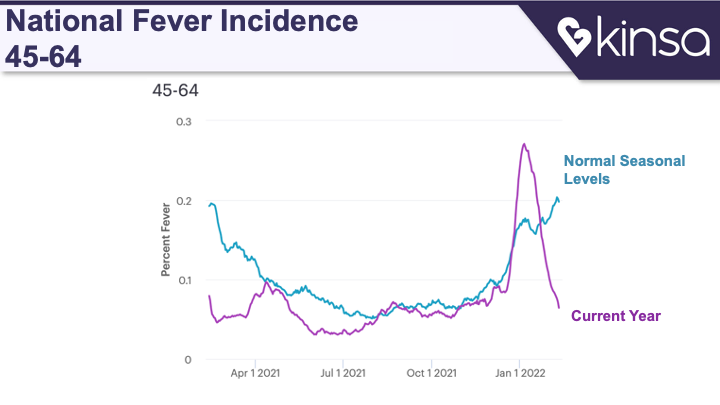
In Spite of the Omicron Surge, National Fever Incidence in Seniors Remained Below Normal Illness Levels
Last week, we reported that national respiratory illness activity (fever, cough, and sore throat) decreased and is below pre-COVID seasonal illness levels (“normal seasonal levels”), which remains true this week across all age groups.
When taking a closer look at the senior population (65-100 years old), Kinsa’s data shows an interesting trend: all age groups, including seniors, experienced a rapid increase in fever incidence in mid-December, likely due to the Omicron surge. For individuals under 65 years old, this increase surpassed the fever incidence of a typical illness season, yet fever incidence among 65-100 year olds remained below normal seasonal levels in spite of the COVID surge.

To provide comparison, the chart below plots national fever incidence in 45-64 year olds within the same time frame, demonstrating a significantly elevated peak in early January, compared to previous seasons.

During the Omicron surge, individuals 65 years and older also had the lowest rates of COVID infection among all age groups - at the peak, seniors had an infection rate less than half of that for people in their 30s, according to C.D.C data.
Seniors have gotten their COVID booster shots at much higher rates than younger populations, and we know that boosters significantly decrease risk of Omicron infection, compared to the two-shot series alone. This may be a contributor to the difference we observe.
National COVID cases continue to rapidly decline, though infection numbers remain elevated compared to prior waves in the pandemic. As people across the country resume more in-person, indoor gatherings, and as mask mandates are lifted in several states like New York, California, Delaware, and more, we’ll continue to keep an eye on national illness levels.
Readers, please note: One input in Kinsa’s HealthWeather COVID risk is daily confirmed cases as collected from state public health authorities by Johns Hopkins University. On the HealthWeather map, some states (like Florida and Tennessee) may appear to have lower COVID risk than they actually have, due to recent state reporting delays/ lags.
To learn more about the data behind this article and what Kinsa has to offer, visit https://www.kinsahealth.co/.







Sign up to receive our stories in your inbox.
Data is changing the speed of business. Investors, Corporations, and Governments are buying new, differentiated data to gain visibility make better decisions. Don't fall behind. Let us help.













Sign up to receive our stories in your inbox.
Data is changing the speed of business. Investors, Corporations, and Governments are buying new, differentiated data to gain visibility make better decisions. Don't fall behind. Let us help.





